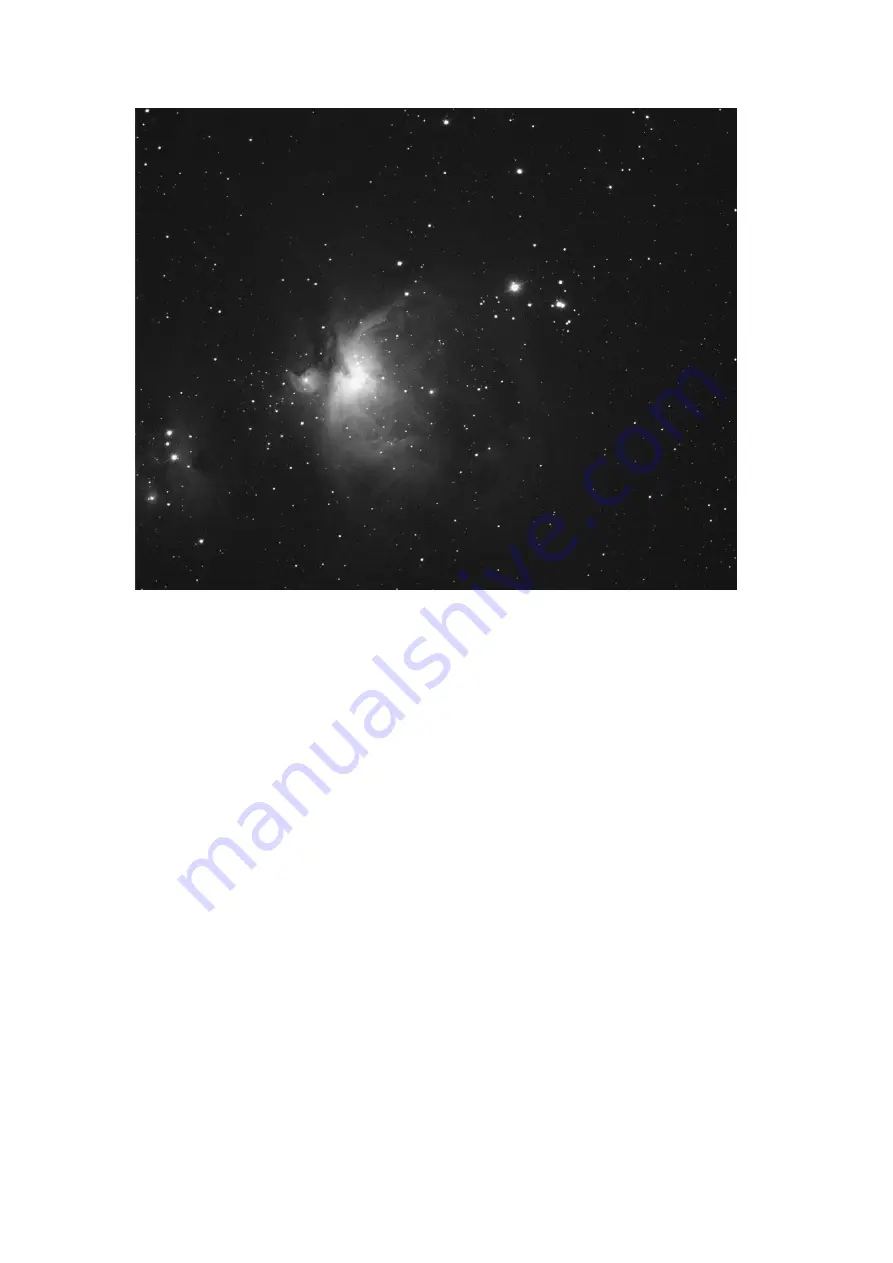
Handbook for the TRIUS SX-825 Issue 1 January 2015
14
The image now looks quite impressive and I hope that you like this result from this simple processing.
Further small refinements are usually possible and you will become expert at judging the best way to
achieve these as your experience increases. As a rough guide, the ‘Filters’ menu can be used to
sharpen, soften or noise reduce the image. Strong ‘High Pass’ filters are usually not a good idea with
deep sky images, as the noise will be strongly increased and dark rings will appear around the stars, but
a ‘Median’ filter can remove odd speckles and a mild ‘Unsharp Mask’ (Radius 3, Power 1) will sharpen
without too much increase in noise.
Other things to try, include summing several images for a better signal to noise ratio. Summing can be
done in the ‘Merge’ menu and involves loading the first processed image, selecting a reference point (a
star) then loading the second image and finding the same star with the mouse. Once the reference is
selected, you can either add directly, or average the images together. Averaging is generally better, as
you are less likely to saturate the highlights of the picture. The signal-to-noise ratio will improve at a
rate proportional to the square root of the number of summations (summing 4 images will double the
signal-to-noise), but
different
exposures must be used. Summing an image with itself will not improve
the S/N ratio. Also note that you cannot sum images before colour conversion, or the colour data will
be destroyed!
Although I have concentrated on the use of a telescope for deep-sky imaging, do not forget that you
have the option of using an ordinary camera lens for impressive wide-field shots! A good quality
200mm F3.5 lens with an infrared blocking filter will yield very nice images of large objects, such as
M31, M42, M45 etc. If you cannot obtain a large IR blocker for the front of the lens, it is quite
acceptable to place a small one behind the lens, inside the adaptor tube. You can even try using a
hydrogen-alpha filter to bring out nebulae, reduce light pollution and sharpen the star images to pin-
points.






















